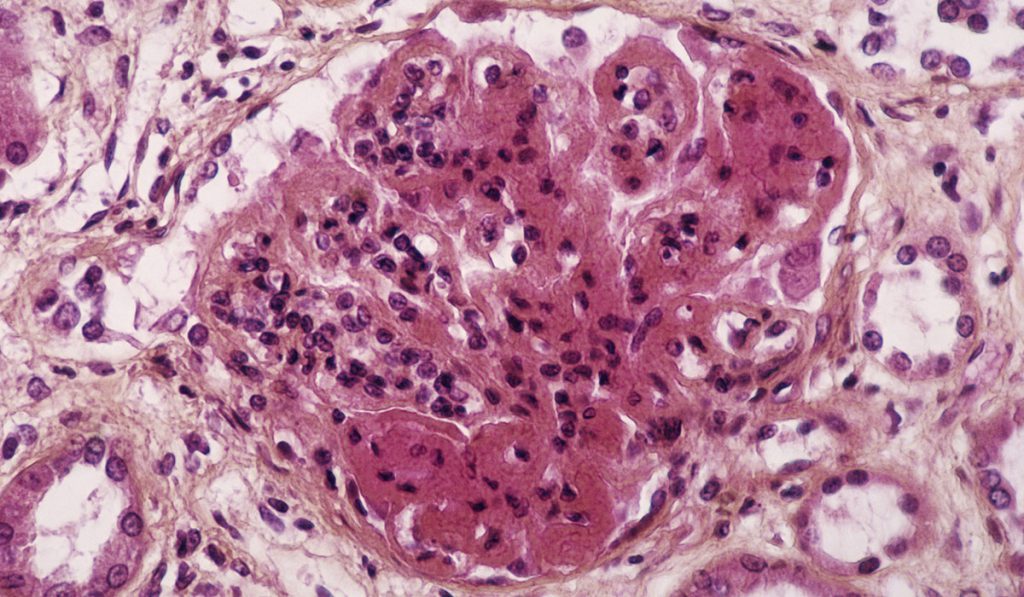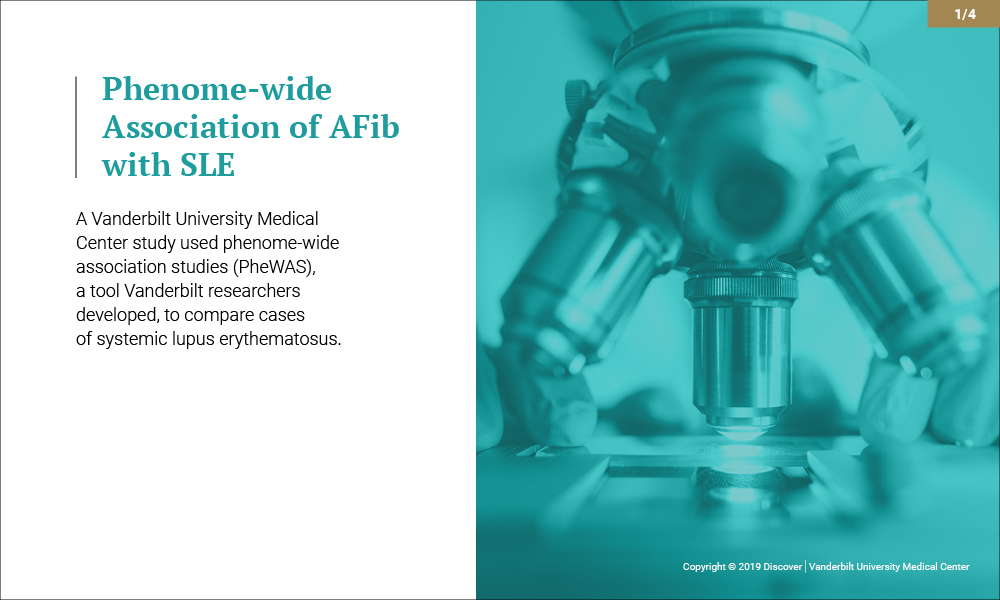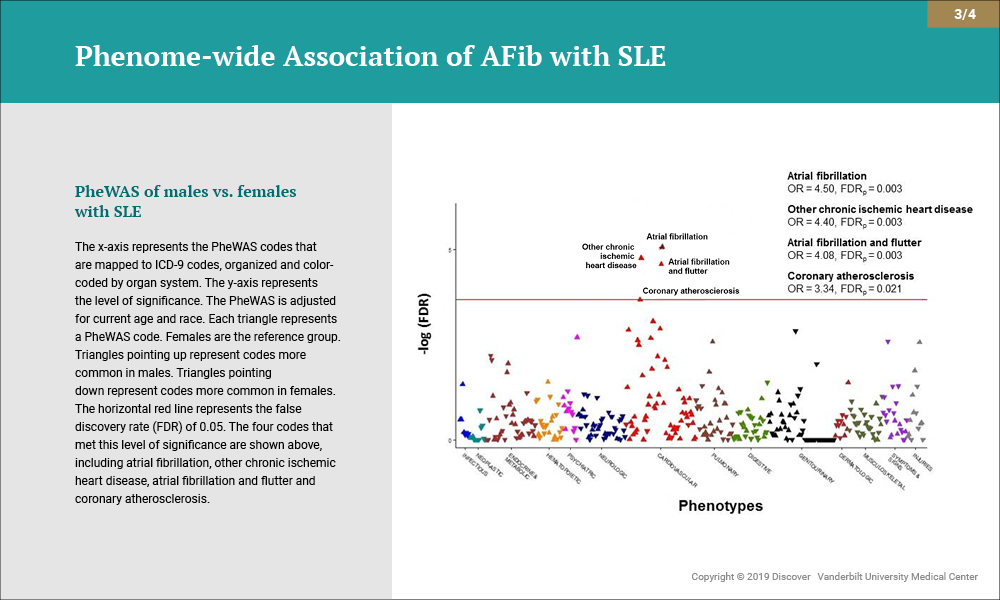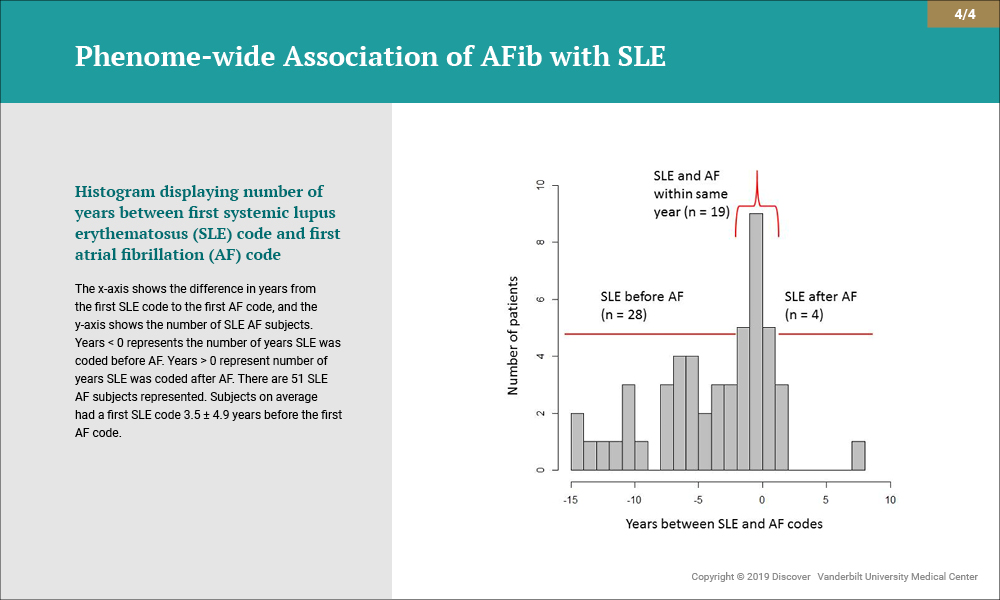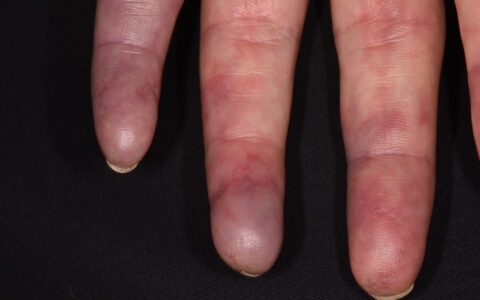While systemic lupus erythematosus (SLE) is more common in females, it has been shown to have a more severe disease course and higher mortality rate in males. Studies with male SLE subjects are limited however, given the 9:1 ratio of female:male SLE patients. In addition, most studies of SLE examine only for differences in American College of Rheumatology SLE criteria and not for comorbidities such as cardiovascular disease.
New research at Vanderbilt University Medical Center applied phenome-wide association studies (PheWAS), a tool developed by researchers in the Vanderbilt department of Bioinformatics, to compare SLE manifestation in males and females. PheWAS uses an EHR-linked, de-identified DNA biobank called BioVU to derive case and control populations using data within the EHR to define clinical phenotypes. It then scans a custom grouping of ICD-9 codes to determine associations.
“We first wanted to see if PheWAS could function as an EHR discovery tool for SLE,” said April Barnado, M.D., director of research at the Vanderbilt Lupus Center. “If PheWAS could identify disease manifestation by comparing lupus patients with matched controls, we could use it to study clinical associations in male versus female SLE patients.”
PheWAS and the EHR
In the proof-of-concept study, Barnado and her co-investigators analyzed 1,097 SLE subjects and 5,735 matched controls. They assembled their SLE subjects using a validated algorithm that uses the SLE ICD-9 code 710.0 and a positive antinuclear antibody (ANA), a lab value commonly measured in lupus patients. They also looked at risk factors for atrial fibrillation (AFib) including history of coronary artery disease (CAD), obesity, diabetes and hypothyroidism, as well as related factors like corticosteroid use.
Using PheWAS to compare males and females with SLE, the investigators uncovered an association of increased AFib in SLE males. A chart review confirmed AFib, with the majority of subjects developing AFib after SLE diagnosis. SLE disease status was independently associated with AFib even after adjusting for age, sex, race and CAD. The study is the first to use PheWAS methodology to perform discovery research in SLE, and it is the first to find an association of increased AFib in males with SLE.
The Future of SLE Research
“If we can figure out the course of the disease, we can help patients with planning and improve treatment and prognostics for all lupus patients.”
Now that they have a proven model, Barnado and her collaborators have identified several future projects using PheWAS to study SLE. They want to compare different groups of lupus patients (e.g. patients with antibodies versus no antibodies), and they hope to use genetic material from BioVU to delve more deeply into genotype/phenotype associations. Barnado’s goal is to leverage the EHR to understand why different SLE patients have different disease outcomes and treatment responses.
“Lupus is so many ‘diseases’,” she explained. “Patients fall across a wide spectrum. We want to better understand this heterogeneity to determine which groups of lupus patients will develop certain complications. If we can figure out the course of the disease, we can help patients with planning and improve treatment and prognostics for all lupus patients.”
